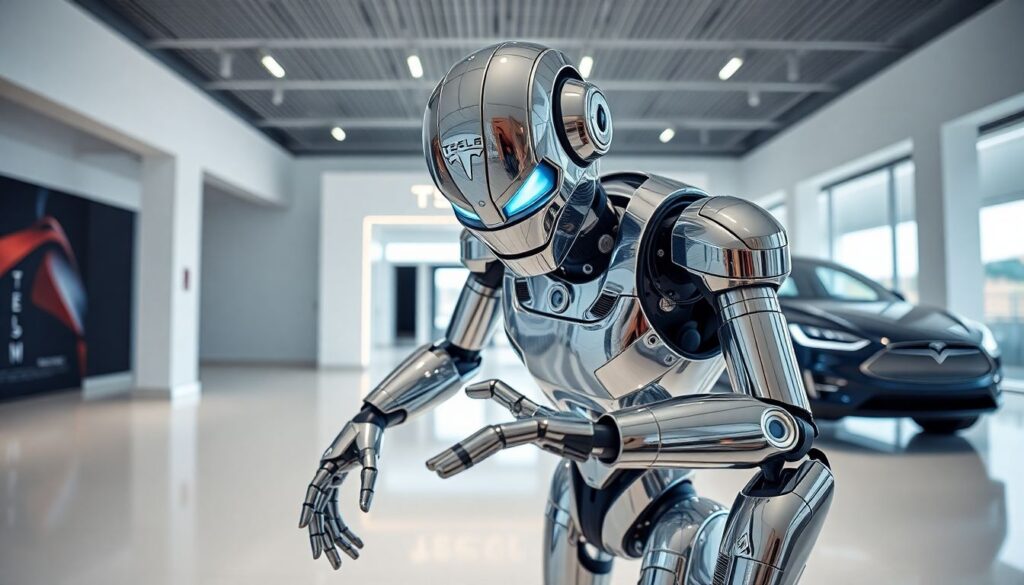The Hype Around Optimus
Elon Musk has always pushed boundaries, and Optimus is no exception. Tesla’s entry into robotics has stirred massive excitement. Many people are curious about how this humanoid robot will fit into our world and what it means for the future of work and daily life. The buzz around Optimus isn’t just hype; it signals a shift toward integrating advanced robotics into our society.
Tesla’s Ambitions in Robotics
Tesla aims to revolutionize many areas of life with Optimus Robot. The company isn’t just building cars; they’re crafting robots designed to tackle complex tasks. From automating labor-intensive jobs to assisting in everyday activities, Tesla sees great potential in robotics. This is part of a larger strategy to enhance efficiency and productivity across various sectors.
Beyond Sci-Fi: The Potential Impact of Optimus Robot
Optimus Robot represents more than just another gadget. This robot could redefine how we view machines in our lives. Imagine having a robot that can help care for the elderly, assist in hospitals, or even lend a hand at home. The possibilities feel endless, and they hint at a future where harmony exists between humans and robots.
Optimus’s Capabilities and Design
Technological Advancements: AI and Sensors
At its core, Optimus Robot is packed with cutting-edge technology. It harnesses artificial intelligence to interpret and respond to its environment. Equipped with advanced sensors, it can navigate spaces, avoid obstacles, and recognize objects. This level of awareness allows Optimus to perform tasks more efficiently than traditional machinery.
Physical Attributes: Strength, Dexterity, and Movement
Optimus is designed to mimic human-like movement. Its articulation means it can lift heavy objects, reach high shelves, and navigate tight spaces. The robot’s dexterity allows it to perform delicate tasks, such as assembling products or handling food. Its physicality sets it apart from many existing robots.
Power Source and Operational Range
Optimus runs on a powerful battery system, enabling extended usage without frequent recharges. With an operational range designed for versatility, this robot can function effectively in homes, factories, or even hospitals. The aim is to create a reliable and robust worker for various scenarios.
Optimus’s Potential Applications
Manufacturing and Industrial Automation
One of the primary sectors where Optimus shines is manufacturing. The ability to automate tasks increases efficiency and reduces labor costs. Companies can leverage Optimus to tackle repetitive tasks, allowing human workers to focus on more complex challenges.
Healthcare and Assistance for the Elderly
In healthcare, Optimus could become a vital ally. It can assist nurses or caregivers by delivering supplies, monitoring patients, and even providing companionship. This could significantly enhance the quality of care, especially for the elderly who may need more assistance.
Everyday Applications: Home Assistance and More
Optimus can also revolutionize tasks at home. Imagine a robot that can cook, clean, or even help with DIY tasks. This kind of helper could transform our living experience, making it more enjoyable and less stressful.

The Challenges Facing Optimus
Technical Hurdles in Development
Despite the potential, creating Optimus comes with challenges. Developing reliable AI and ensuring smooth movement is no small feat. Engineers face technical decisions that can make or break this project.
Ethical Concerns and Societal Impact
The rise of humanoid robots raises ethical questions. How will society adapt to machines taking on roles traditionally held by humans? Issues surrounding job displacement and the ethical treatment of robots need serious consideration.
Economic Viability and Market Competition
Making Optimus commercially viable is crucial. It must compete with other robotic solutions. Cost, versatility, and usability will dictate its success in the marketplace. This adds pressure to Tesla as they push this innovation forward.
Optimus and Tesla’s Long-Term Strategy
Integration with Tesla’s Existing Ecosystem
Optimus fits perfectly into Tesla’s larger ecosystem. The company already excels in software and hardware integration. Pairing these strengths with Optimus could lead to groundbreaking advancements in both robotics and smart technology.
The Future of AI and Humanoid Robotics
Looking ahead, the future of AI and humanoid robotics looks promising. With continuous advancements, we could see robots becoming commonplace in our lives. This could enhance productivity and improve living standards.
Musk’s Vision for a Robot-Assisted Future
Elon Musk envisions a future where robots like Optimus help people live better lives. His goal revolves around making tasks easier and allowing humans to focus on creativity and innovation. This optimistic outlook pushes many boundaries in current technological norms.
Conclusion: Optimus – A Glimpse into Tomorrow
Key Takeaways and Future Predictions
Optimus stands at the forefront of a new era in robotics. While it faces challenges, its potential applications are vast. As Tesla continues to develop this technology, society could soon embrace robots in everyday life.
Call to Action: Stay Updated on Optimus’ Development
For those interested in the future of robotics, keeping an eye on Optimus is essential. Follow the developments from Tesla and watch as this robot shapes our world. The future is bright, and Optimus is just getting started.


[…] several years away from the spotlight, Superman’s resurgence is creating waves. Fans are eager for a new storyline that resonates with the modern […]
[…] truly differentiates the realme14Pro is its competitive pricing and impressive features. Users frequently highlight its value […]